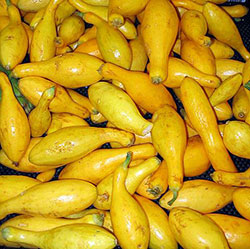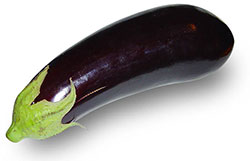Many new vegetable gardeners feel uncertain on when to harvest certain vegetables. Counting days to maturity cannot always be relied upon as precipitation, temperature and soil fertility can vary from year to year. Keeping track of days, however, will provide an alert as to what to expect. The choice of picking time is important because it affects quality, nutritional value and flavor. Harvesting vegetables is as important as knowing how to grow them.
Most fruiting and many leafy vegetables are not grown until full maturity. Picking time is generally a balance between allowing more time to produce larger yield versus maximum flavor and quality. Fresh eating probably wins out for most gardeners unless it’s a vegetable grown for drying (beans) or storing (winter squash).
Cob and pod vegetables are harvested before sugars are converted to starch. Sweet corn loses quality if harvest is delayed by even a few days. Pods of peas, beans and okra become fibrous and toughen. Seeds may be present but harvest when they are immature. Mid-summer planted peas and bush beans are seasonal for harvest mid-late August.

Summer squash is definitely picked with young seeds and tender skins. Over mature fruit must be cooked long to tenderize the skin which overcooks the flesh and also affects flavor. With fall (winter) squash, skins should be allowed to toughen until they resist gentle pressure from a fingernail. Seeds will be on their way to maturity but these are scooped out and aren’t used unless dried and roasted. Maturity also develops flavor of the flesh. With maturing fruit and seeds, production will slow but this is the compromise with fall squash.
Unless green tomatoes are desired for cooking, tomatoes are best ripened to full color on the vine. When frost threatens, pick fruit with a hint of color or that is mature green – three-fourths normal size and bears a glossy sheen – and ripen indoors. Peppers picked green promote more production. When allowed to develop red color and seeds, appearance of more peppers slows. Eggplants can be harvested when half their mature size and shiny. Large, dull-skinned fruit often have turned bitter and even woody.

Leafy salad greens can be harvested when leaves are small and tender or allowed to grow until mid-sized. If allowed to grow large, seed stalks begin development and greens become bitter. Cooking greens can likewise be harvested young or mid-sized. Mature leaves often develop fibers in mid-veins which even cooking doesn’t tenderize.
Heading greens such as lettuce should have developed firm heads. Cabbage is generally harvested loose for summer types, firm-headed for fall and winter types.
Root vegetables can be harvested small (think new potatoes or young beets) or allowed to grow to size. Do not allow to oversize and become woody (carrots, beets and turnips). If timed right, middle aged to mature roots can be kept in the soil until harvest in October and November. Parsnips develop better flavor when harvested after frost and store well in the garden. If the soil is mulched, many root crops keep in the garden for winter digging.



